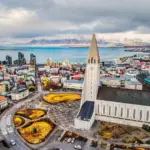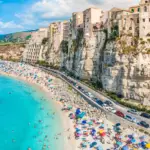
Puglia: Exploring the History, Culture, and Flavors of Southern Italy
Introduction
The region of Puglia, Located in southeastern Italy, Puglia is a true hidden gem that captivates visitors with its stunning natural beauty and rich historical heritage. Known as the "heel of the Italian boot" due to its distinctive shape on the map, Puglia is becoming increasingly popular among those seeking an authentic Italian experience. The region is blessed with a diverse geography, including picturesque coastlines, gentle hills, and vast fertile plains.
Furthermore, the influence of the Mediterranean Sea provides a mild and pleasant climate year-round. These characteristics make Puglia not only a picturesque destination but also a place suitable for growing high-quality agricultural products.

Introducing the Puglia Region
Puglia is made up of five provinces: Bari, Brindisi, Foggia, Lecce, and Taranto. Each of these provinces has its own unique characteristics and attractions.
The coastal city of Bari is one of the region's most important and serves as a gateway for many travelers exploring Puglia. Brindisi also boasts a bustling port and offers easy access to the beautiful beaches of the Adriatic Sea.
Foggia is known for its stunning countryside and significant agricultural production, while Lecce stands out for its impressive baroque architecture and vibrant atmosphere. Finally, Taranto is a city rich in history, home to an important industrial and naval center.
The Historical and Cultural Importance of Puglia
Puglia boasts a rich historical and cultural heritage dating back to ancient times. During the Bronze Age, the region was inhabited by pre-Roman civilizations, such as the Messapii.
Later, the Greeks colonized the region, establishing city-states along the coast. Roman influence also left its mark on Puglia, with numerous ruins of ancient Roman villas scattered throughout the region.
Furthermore, Puglia was part of the Byzantine Empire during the Middle Ages and witnessed epic battles between Normans, Saracens, and other regional powers. This fascinating blend of historical influences has resulted in Puglia's rich cultural heritage.
The architecture ranges from imposing Norman castles to stunning Romanesque cathedrals and ornate Baroque palaces. Furthermore, the region's unique folk traditions are preserved through colorful festivals, traditional dances, and traditional music.

The Geography and Climate of Puglia
The Geographical Charm of the Region
Puglia, or Apulia, is located in the southeastern part of Italy, in the country's famous "boot." Covering approximately 19,358 square kilometers, the region is blessed with a diverse geography that captivates visitors. As you explore Puglia, you'll encounter a remarkable combination of stunning beaches along the Adriatic and Ionian coasts, picturesque hills adorned with vineyards and olive groves, and vast plains stretching as far as the eye can see.
A Journey Through the Puglian Landscape
Puglia's varied landscapes provide an immersive experience for travelers. Along the coast, you'll find some of Italy's most stunning beaches, with crystal-clear waters and golden sands inviting relaxation under the Mediterranean sun.
As you delve deeper into the region, gentle hills reveal themselves in all their majestic green vegetation—a delight for nature lovers. Exploring Puglia's hills means discovering landscapes dotted with manicured vineyards and fields filled with centuries-old olive groves.
Agricultural culture plays an essential role in the society and economy of this region. The fertile plains, with rich soils suitable for cultivation, are home to diverse plantations of wheat, tomatoes, and fresh vegetables that nourish both locals and the lucky visitors who have the chance to savor Puglian cuisine.
The Influence of the Mediterranean Climate
Puglia's Mediterranean climate is one of the main factors responsible for the beauty and prosperity of this charming region. Summers are long and hot, with temperatures often exceeding 30 degrees Celsius. These favorable climatic conditions are essential for the ripening of grapes and the production of exceptional wines by Puglia's winemakers.
It's worth mentioning the refreshing sea breezes, which alleviate the intense summer heat. This unique combination of radiant sunshine and sea breezes creates the perfect environment for swimmers to enjoy Puglia's stunning beaches.
In winter, the region experiences a slight drop in temperature, but it is still considered mild compared to other parts of Italy. Even during this colder season, many travelers take the opportunity to explore Puglia's picturesque landscapes without facing extremely adverse weather conditions.
Puglia's diverse geography and unique Mediterranean climate create a spectacular landscape that attracts travelers from around the world. Whether you're looking for paradisiacal beaches, lush green hills, or a charming combination of both, Puglia offers everything you need for an unforgettable experience.
Ancient Origins of Puglia: From Pre-Roman Peoples to Greek Colonization
The Puglia region has a rich history dating back to antiquity. Before Roman rule, several civilizations left their mark on the region. The first inhabitants, known as the "Dauni," an Illyrian people, settled in the area around 1000 BC. They were skilled farmers and developed advanced wheat cultivation techniques.
In the 8th century BC, the Greeks colonized parts of Puglia and founded important city-states such as Taranto and Brindisi. This Greek colonization brought with it a new level of cultural sophistication to the region, influencing the arts, commerce, and urban development.
This blend of pre-Roman and Greek cultures laid a solid foundation for Puglia's future development. The region's archaeological wealth, including ancient ruins and artifacts, attests to its fascinating origins.
Roman and Byzantine Influence in the Region
With the growing Roman power in the 3rd century BC, Puglia was incorporated into the Roman Empire. The Roman presence brought economic prosperity to the region through the establishment of important trade routes connecting southern Italy with the rest of the empire. During the Byzantine period (5th to 11th centuries), Puglia became a bastion of Eastern culture and religion.
The region became an important ecclesiastical center, with the construction of magnificent cathedrals that combined Roman and Byzantine elements in their structures. The Basilica of St. Nicholas in Bari is a notable example of this architectural syncretism.
Byzantine influence was also reflected in the art, music, and literature produced in Puglia during this period. This cultural legacy continues to be appreciated to this day.

Architectural Wealth: Norman Castles, Roman Cathedrals and Baroque Palaces
Puglia's architectural richness is truly impressive and reflects its multicultural history. Norman castles are a striking feature of the Puglian landscape.
The Castel del Monte, built in the 13th century by Frederick II, is an extraordinary example of Norman architectural style with Islamic influences. Romanesque cathedrals are fascinating treasures scattered throughout the region.
These grand churches boast ornate facades carved from local limestone and house valuable works of religious art. Trani Cathedral is particularly notable for its seaside location and aesthetic blend of pure Romanesque style with Gothic touches.
During the Baroque period (16th to 18th centuries), many opulent palaces and mansions were built by the local nobility. These imposing structures feature elaborate facades, decorative frescoes, and lush gardens.
The Royal Palace of Caserta, although not in Puglia, is an extraordinary example of this architectural style. Puglia's rich architectural heritage offers visitors the opportunity to explore a unique blend of styles and historical periods in a stunning setting.

Unique Gastronomy: Highlighting the Traditional Mediterranean Diet
The Puglia region is known for its rich and healthy cuisine, based on the famous Mediterranean diet. This diet has been studied and admired worldwide for its health benefits. Puglia, with its seaside location and favorable climate, offers an incredible variety of fresh produce, such as extra virgin olive oil, colorful vegetables, fresh fish, and succulent fruits.
Typical Puglian dishes, such as "orecchiette" (ear-shaped pasta), are emblematic. This pasta is handmade by skilled local bakers using semolina and water. The dish's peculiar name derives from its round shape with a small indentation in the center, resembling a human ear.
Orecchiette is often served with a tomato-based sauce or homemade pesto made with fresh ingredients like basil, garlic, and pine nuts. Another regional specialty is buridda, a delicious fish stew that combines different types of white fish slowly cooked in a robust sauce made with white wine, capers, and aromatic herbs.
This dish is appreciated for its richness of flavors and textures and is usually served with slices of crusty bread or creamy polenta.

Conclusion
Puglia's gastronomy is truly unique and reflects the richness of local products as well as the influence of different cultures throughout historyThe Mediterranean diet traditionally followed in the region emphasizes the importance of fresh, seasonal ingredients, resulting in tasty, healthy dishes.
From the iconic orecchiette to seafood stews, every meal in Puglia is an unforgettable culinary experience that combines tradition, history, and a passion for food. When visiting this charming region of Italy, be sure to explore its unique gastronomic delights!
Lucas Wanderlust has a tireless spirit of adventure, always seeking new travel experiences. Fascinated by the world and the possibility of exploring unknown destinations, he fell in love with the sense of freedom and self-discovery that traveling alone provides. With a backpack on his back and a heart open to the unknown, Lucas embarks on exciting journeys, where each destination becomes a unique chapter in his life story. He gives himself body and soul to the magic of solo travel, inspiring others to follow in his footsteps and discover themselves through adventure.







